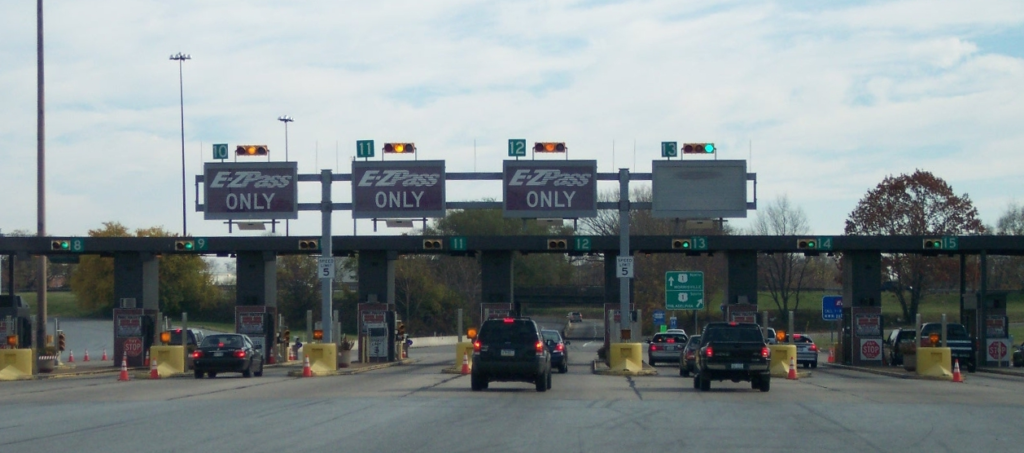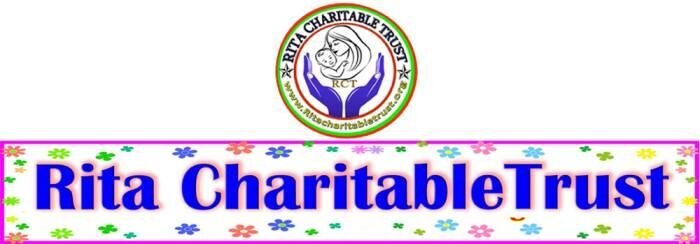Free Highway Toll Attendant Course (6Months)
Highway Toll Attendant:
Brief Job Description
A candidate in this job role assists in smooth traffic management at the toll plaza by performing activities like assigning each lane to channnelizers. He is also responsible for addressing road users query if any. He will accord priority to exempt and emergency vehicles.He must adhere to relevant occupational health and safety guidelines while carrying out the tasks. The individual is expected to competently carry out assigned duties as per standard operating procedures.
Personal Attributes
Must exhibit good customer service attributescourteous, solution-oriented, polite, reliable, good decision- making skills, etc. Possess an alert mind and a physically active body.


Work effectively in a team:
Scope
This unit/task covers the following: Colleagues: Superiors Members of own work group People in other work groups within or outside the organisation Communicate: Face-to-face By telephone In writing
Superiors
Members of own work group
People in other work groups within or outside the organisation Face-to-face
By telephone In writing
Elements and Performance Criteria
Effective communication
To be competent, the user/individual on the job must be able to:
PC1. maintain clear communication with colleagues
PC2. work with colleagues
PC3. pass on information to colleagues in line with organisational requirements
PC4.. work in ways that show respect for colleagues
PC5. carry out commitments made to colleagues
PC6. let colleagues know in good time if cannot carry out commitments, explaining the reasons
PC7. identify problems in working with colleagues and take the initiative to solve these problems
PC8. follow the organisations policies and procedures for working with colleagues
PC9. ability to share resources with other members as per priority of tasks
Knowledge and Understanding (KU)

The individual on the job needs to know and understand:
KU1. the organisations policies and procedures for working withcolleagues, role and responsibilities in relation to this
KU2. the importance of effective communication and establishing goodworking relationships with colleagues
KU3. different methods of communication and the circumstances inwhich it is appropriate to use these
KU4. benefits of developing productive working relationships withcolleagues
KU5. the importance of creating an environment of trust and mutualrespect
KU6. whether not meeting commitments, will have implications onindividuals and the organisation
KU7. different types of information that colleagues might need and theimportance of providing this information when it is required
KU8. the importance of problems, from colleagues perspective andhow to provide support, where necessary, to resolve these
Generic Skills (GS)
User/individual on the job needs to know how to:
GS1. complete well written work with attention to detail
GS2. read instructions, guidelines/procedures
GS3. listen effectively and orally communicate information
GS4. make decisions on a suitable course of action or response
GS5. plan and organise work to achieve targets and deadlines
GS6. check that the work meets customer requirements
GS7. deliver consistent and reliable service to customers
GS8. apply problem solving approaches in different situations
GS9. apply balanced judgements to different situations
GS10. apply good attention to detail
GS11. check that the work is complete and free from errors
GS12. get work checked by peers
GS13. work effectively in a team environment

Maintain a healthy,safe and secure working environment:
Scope
This unit/task covers the following:
Resources (both material & manpower) needed to maintain a safe working environment as per the prevalent norms & government policies including emergency procedures for Illness, accidents, fires or any other reason which may involve evacuation of the premises
Elements and Performance Criteria
Resources needed to maintain a safe, secure working environment
To be competent, the user/individual on the job must be able to:
PC1. comply with organisations current health,safety and security policies and procedures
PC2. report any identified breaches in health,safety, and security policies and procedures to the designated person
PC3.. Coordinate with other resources at the workplace to achieve the healthy, safe and secure environment for all incorporating all government norms esp. for emergency situations like fires,earthquakes etc.
PC4. identify and correct any hazards like illness, accidents, fires or any other natural calamity safely and within the limits of individuals authority
PC5. report any hazards outside the individuals authority to the relevant person in line with organisational procedures and warn other people who may be affected
PC6. follow organisations emergency procedures for accidents, fires or any other natural calamity
PC7. identify and recommend opportunities for improving health,safety, and security to the designated person
PC8. complete all health and safety records are updates and procedures well defined
Knowledge and Understanding (KU)
The individual on the job needs to know and understand:
KU1. legislative requirements and organisations procedures for health, safety and security and individuals role and responsibilities in relation to this
KU2. what is meant by a hazard, including the different types of health and safety hazards that can be found in the workplace
KU3. how and when to report hazards
KU4. the limits of responsibility for dealing with hazards
KU5. the organisations emergency procedures for different emergency situations and the importance of following these
KU6. the importance of maintaining high standards of health, safety and security
KU7. implications that any non-compliance with health, safety and security may have on individuals and the organisation
KU8. different types of breaches in health, safety and security and how and when to report these
KU9. evacuation procedures for workers and visitors
KU10. how to summon medical assistance and the emergency services,where necessary
KU11. how to use the health, safety and accident reporting procedures and the importance of these
Generic Skills (GS)
User/individual on the job needs to know how to:
GS1. complete accurate, well written work with attention to detail
GS2. read instructions, guidelines/procedures/rules
GS3. listen and orally communicate information
GS4. make decisions on a suitable course of action or response
GS5. plan and organise work to achieve targets and deadlines
GS6. build and maintain positive and effective relationships withcolleagues and customers
GS7. apply problem solving approaches in different situations
GS8. analyse data and activities
GS9. apply balanced judgements to different situations
GS10. apply good attention to detail
GS11. check that the work is complete and free from errors
GS12. get work checked by peers
GS13. work effectively in a team environment
Resources needed to maintain a safe, secure working environment
PC1. comply with organisations current health,safety and security policies and procedures
PC2. report any identified breaches in health,safety, and security policies and procedures to the designated person
PC3.. Coordinate with other resources at the workplace to achieve the healthy, safe and secure environment for all incorporating all government norms esp. for emergency situations like fires,earthquakes etc.
PC4. identify and correct any hazards like illness, accidents, fires or any other natural calamity safely and within the limits of individuals authority
PC5. report any hazards outside the individuals authority to the relevant person in line with organisational procedures and warn other people who may be affected
PC6. follow organisations emergency procedures for accidents, fires or any other natural calamity
PC7. identify and recommend opportunities for improving health,safety, and security to the designated person
PC8. complete all health and safety records are updates and procedures well defined

Assist toll collector in toll collection activity:
Scope
Elements and Performance Criteria
Work safely
To be competent, the user/individual on the job must be able to:
PC1. work safely at all times, complying with health and safety legislation, regulations and other relevant guidelines
PC2. adhere to procedures or systems in place for health and safety, personal protective equipment (PPE) and other relevant safety regulationsPersonal Protective Equipment: Safety vests/ Jackets, hand flasher/baton
PC3. ensure safety of the staff at all times
Prepare for traffic management
To be competent, the user/individual on the job must be able to:
PC4. report to scheduled shift as per the standard process and take briefing from the plaza manager/plaza controller/shift incharge
PC5. check that the required number of channelizer are present and report any variance to plaza controller
PC6. check that channelizers are in prescribed uniform, PPE and display their identity cards properly and report any exception to plaza controllerPersonal Protective Equipment: Safety vests/ Jackets, hand flasher/baton
PC7. assign each lane to channelizers and ensure that channelizers are not changing lanes without prior permission
PC8. enforce strict discipline among channelizers and ensure that each channelizer performs duty as per standard procedures
PC9. take measures to ensure smooth traffic flow at the toll collection booths
PC10. close the lane for traffic when the toll booth is under maintenance or any other reasons by placing barricades,safety cones, safety tapes etc. and divert the traffic to other lanes
PC11. accord priority to VIP and other exempt vehicles as per specified procedures
PC12. verify documents of exempt vehicles in co-ordination with the control room
PC13. address road users complaints and queries promptly
PC14. seek help of plaza manager/plaza controller/shift incharge/APM in resolving road users complaints if necessary
PC15. ensure that no traffic passes through non motorized lanes except two wheelers, three wheelers and animal driven carts
PC16. take measures to ensure that no passenger boards or alights from the vehicle within 500 m surrounding the plaza canopy area
PC17. take measures to ensure that no vehicle passes through the toll booth without paying stipulated toll
PC18. maintain shift incident report register and important records collected during the shift
PC19. brief next shift incharge on the pending issues if any and hand over shift incident report register
PC20. sign off from the shift in accordance with the standard operating procedure
Knowledge and Understanding (KU)
The individual on the job needs to know and understand:
KU1. relevant legislation, standards, policies, and procedures followed in the company relevant to own employment and performance conditions
KU2. relevant health and safety requirements applicable in the work place
KU3. own job role and responsibilities and sources for information pertaining to employment terms, entitlements, job role and responsibilities
KU4. reporting structure, inter-dependent functions, lines and procedures in thework area
KU5. how to engage with concerned persons for support in order to resolve incidents
KU6. importance of working in clean and safe environment practices and procedures relevant people and their responsibilities within the work area
KU7. escalation matrix and procedures for reporting work and employment related issues
KU8. importance of using personal protective equipment appropriate to carry out the given tasks as per relevant occupational health & safety guidelines
KU9. hazards and potential risks associated with the given work and safety control measures used to prevent injury to self and others
KU10. types of tolling systemsTolling systems: Open toll system, closed toll system
KU11. methods of toll collectionMethods : Manual toll collection, automatic toll collection, electronic toll collection
KU12. common terms used in tollingCommon terms: Throughput, demand, processing time, queing area, merging area, number of toll lanes
KU13. knowledge of traffic and electronic signs
KU14. importance of traffic standard definitionsTraffic standard definitions: Advance working zoe, transition zone, working zone, carriageway traffic control, traffic control devices, detour, diversion etc
KU15. basic knowledge and operation of a computer
KU16. use of electronic equipment used in toll collection
KU17. classification of roadsClassification: National highways, state highways, other PWD roads and rural roads
KU18. rules and regulations of National Highways, 1997Rules: Collection of fees by any a person for the use of section of National Highways/ Permanent bridge/ Temporary bridge on National Highways etc.
KU19. different class of vehicle as per NHAI guidelinesClass: Car/jeep/van, LCV, bus/truck, upto 3 axle vehicle, 4 to 6 axle vehicle, HCM/EME, vehicles with 7 or more axles
KU20. who should be exempted from paying toll tax as per NHAI rulesExemption from payment of toll tax as per current NHAI rules: Transporting and accompanying, the President of India, the Vice President of India, the Prime- Minister of India, the Governor of a state, the Speaker of the Huose of People, the Cabinet Minister of the union, the Chief Minister of a State, the Judge of the Supreme Court, the Minister of State of the Union, the Lieutenant Governor of a Union territory, the Chief of Staff holding the rank of full General or equivalent rank, the Chairman of the Legislative Council of a State, the Speaker of the Legislative Assembly of a State, the Chief Justice of a High Court, the Judge of a High Court, the Member of Parliament, the Army Commander or Vice-Chief of Army Staff and equivalent in other services, the Chief Secretary to a State Government within concerned State, the Secretary to the Government of India, the Secretary, Council of States, the Secretary, House of People, the Foreign dignitary on State visit,fire fighting vehicle, ambulance, funeral van etc.
KU21. how to exempt a vehicle from paying toll tax
KU22. use of code laws for beaconsBeacon: Red beacon (with/without flasher), Blue beacon (with/without flasher)
KU23. how to seek help from the plaza controller incase of incidents

Generic Skills (GS)
User/individual on the job needs to know how to:
GS1. fill up appropriate forms,incident report, exemption reports as per organizational format in English and/or local language
GS2. read and interpret information correctly from the notice board, standard operating procedure etc.
GS3. interpret toll business rules
GS4. read signages, safety symbols, warnings, etc. displayed in work environment
GS5. communicate with road users clearly, effectively and politely
GS6. convey information to the shift-incharge, plaza manager, barrierman, channelizers,cashier,toll collector etc.
GS7. when faced with difficult situations seek clarification from the shift-incharge or plaza controller or responsible authority on how to resolve problems
GS8. identify the problems that might arise during the traffic management activity activity and take necessary actions quickly
GS9. exhibit polite and courteous behavioral skills
Work safely
PC1. work safely at all times, complying with health and safety legislation, regulations and other relevant guidelines
PC2. adhere to procedures or systems in place for health and safety, personal protective equipment (PPE) and other relevant safety regulationsPersonal Protective Equipment: Safety vests/ Jackets, hand flasher/baton
PC3. ensure safety of the staff at all times
Prepare for traffic management
PC4. report to scheduled shift as per the standard process and take briefing from the plaza manager/plaza controller/shift incharge
PC5. check that the required number of channelizer are present and report any variance to plaza controller
PC6. check that channelizers are in prescribed uniform, PPE and display their identity cards properly and report any exception to plaza controllerPersonal Protective Equipment: Safety vests/ Jackets, hand flasher/baton
PC7. assign each lane to channelizers and ensure that channelizers are not changing lanes without prior permission
PC8. enforce strict discipline among channelizers and ensure that each channelizer performs duty as per standard procedures
PC9. take measures to ensure smooth traffic flow at the toll collection booths
PC10. close the lane for traffic when the toll booth is under maintenance or any other reasons by placing barricades,safety cones, safety tapes etc. and divert the traffic to other lanes
Assessment Guidelines
- Criteria for assessment for each Qualification Pack will be created by the Sector Skill Council. Each Element/ Performance Criteria (PC) will be assigned marks proportional to its importance in NOS. SSC will also lay down proportion of marks for Theory and Skills Practical for each Element/ PC.
- The assessment for the theory part will be based on knowledge bank of questions created by the SSC.
- Assessment will be conducted for all compulsory NOS, and where applicable, on the selected elective/option NOS/set of NOS.
- Individual assessment agencies will create unique question papers for theory part for each candidate at each examination/training center (as per assessment criteria below).
- Individual assessment agencies will create unique evaluations for skill practical for every student at each examination/ training center based on these criteria.
- To pass the Qualification Pack assessment, every trainee should score the Recommended Pass % aggregate for the QP.
- In case of unsuccessful completion, the trainee may seek reassessment on the Qualification Pack.



